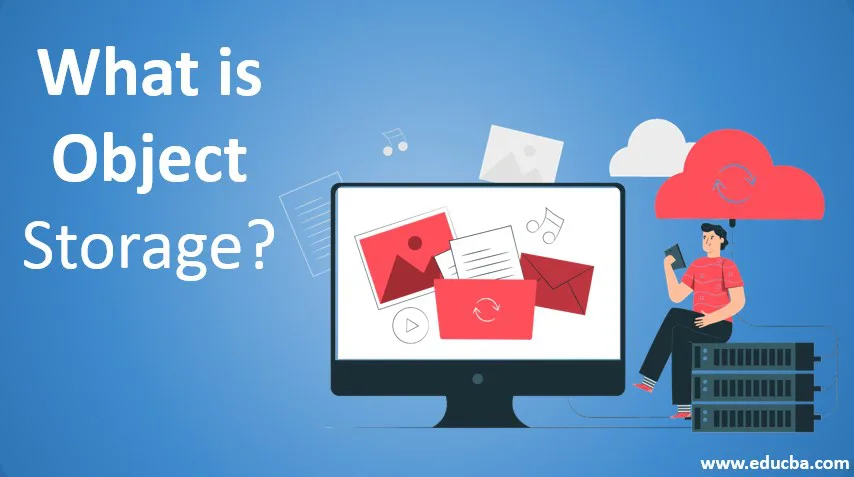
Introduction to Object Storage
Object Storage is managed as distinct units where data is stored in object storage. All the objects are stored in a single server and are not mixed with any other files or folders. All the pieces of data are combined together to form a file, an identifier is given to the file and the relevant metadata is added to the file. There is no hierarchy system of storage in object storage. The tier system is eliminated and flat address space is created. This address space is called the storage pool. This provides an analysis of the usage of files and functions. Any amount of data can be added and there is no limit for the same. In short, the data is scalable to any extent. There is no hierarchy and a unique identifier is given to each data stored in object storage. This helps to retrieve data faster than any other storage. The data is called with the help of an identifier and is retrieved as there is no folder hierarchy. This is a great advantage of object storage. The cost is very less as it is easy to scale the storage. The metadata is customizable and hence it is offered with less cost.
Why Do We Use Object Storage?
The reason for using is mainly for its scalability. We can scale object storage as and when required. Scalability is achieved by managing the file system and decoupling the same. This helps to use the storage for servers with higher priority works and for more development projects. Data is growing day by day and traditional methods cannot solve the problem of data storage as it is mainly SAN and NAS systems of storage. It has cloud technology that uses public cloud so that users are provided with cost-efficient and a scalable environment. Any amount of data is stored without any performance problems. The data is stored in a single namespace and codes can be used to maximize the disc space. All the files are arranged in a specific manner and the files are stored as objects in the system. Object storage is used to manage the data and its functions effectively. It does the versions of data, customizes metadata and looks after the metadata analytics. Only high-level details are stored which helps to eliminate low-level details and this helps to keep the files in scalable size.
Use Cases of Object Storage
- Unstructured data is managed and hence there is a presence of rich media for the entire file system. This reduces the costs of the files and the media as it is globally shared.
- The media is globally distributed and as it has several connections with other systems, it turns out to be an advantage.
- The distributed content is effectively managed and explained well in the object storage. The value of the data is optimized throughout the data cycle and it helps in delivering the services that are competitive to the other services.
- It uses digital technologies within the system. It uses the internet of things, manages communication of machines, analyses data efficiently, artificial intelligence is supported and used very well, the design is managed with the help of cost and time within the process.
Benefits of Object Storage
- The data stored in object storage is retrieved faster than any other storage. Also, the data recovery is sooner done with the help of the network and any other systems. This makes object storage to stand out when compared with other storage types. We need to go through all the folders as the files are given a unique identification number. Also, users need not worry about the location of the data.
- Administrators can use different rules for data preservation, updating, and deletion. The storage points are distributed to the entire data structure which helps to recover and retrieve data without any issues.
- Since object storage is not limited with hierarchy, the environment is flat and any type of data can be stored. The access provided to data storage is different from other storage and hence users prefer object storage than others.
- We can create any number of attributes and customize them according to the priority of users. We need not use any separate application for this purpose which is also an advantage.
- Scalability is a greater advantage as it helps to store large amounts of data with less cost. The amount of data stored is due to its scalability helps to manage the data and hence cost is reduced as all the data is stored in a single namespace or a single server. This makes object storage to be used in small and big projects alike.
- Developer support for object storage is also less as the code manages the process. Data integration is also important for data storage.
Conclusion
We cannot place one data file inside other data files as the data is stored in a storage pool. There are many benefits in using the object storage and this makes the storage worthy of systems. We can use object storage with AWS and this helps the storage to mount with other systems well with different properties.
Recommended Articles
This is a guide to What is Object Storage?. Here we discuss the Introduction to Object Storage and Why do we use Object Storage along with Benefits. You can also go through our other suggested articles to learn more –
